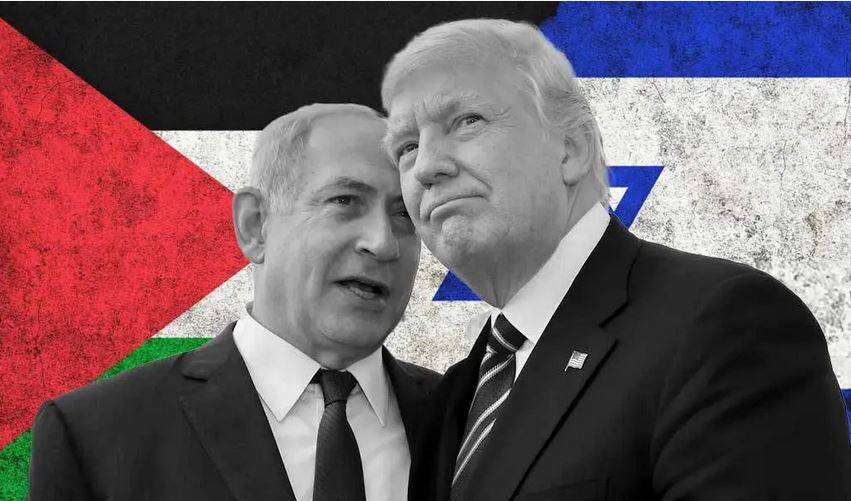1611 Views
Trump’s ‘Peace Plan’: A Shortcut to Justice or a Roadmap for Endless Occupation
Donald Trump, by unveiling a new version of his peace plan for the Middle East, has once again drawn attention to the long-standing Israeli–Palestinian conflict. While the plan is presented with promises of ending hostilities and ushering in a period of economic prosperity for Gaza, in practice, it has been met with a wave of skepticism and outright rejection from Palestinians and many Arab countries.
This rejection is not rooted in obstinacy, but in a deep analysis of the structure, goals, and consequences of a plan that resembles less a roadmap to peace and more a document designed to entrench Israeli occupation and disregard the fundamental rights of the Palestinian people.
Unilateralism and Ignoring the Main Party
One of the most significant criticisms of Trump’s peace plan is its unilateral nature and its exclusion of Palestinians from the drafting process. The plan was shaped primarily through coordination between Israel and the United States, with Palestinians—the main party to the conflict—having no decisive role. This reality made the plan appear more like a blueprint to consolidate Israeli occupation rather than to achieve genuine peace.
While Palestinians have historically played a central role in peace negotiations, Trump’s plan effectively disregards their rights and interests. Furthermore, it contains no clear commitment to ending Israeli occupation or liberating Palestinian lands, which severely undermined Palestinian trust in the proposal.
Ignoring the Roots of the Crisis
Another major flaw of Trump’s plan lies in its neglect of the core causes of the Palestinian crisis. The plan focuses on rebuilding and managing Gaza, while the primary issue—Israeli occupation and the blockade of Gaza—is sidelined. Likewise, the expansion of Israeli settlements in the West Bank is completely ignored.
In effect, the plan offers no program to halt these colonial practices and instead seems designed to strengthen Israel’s position and legitimize its actions in the occupied territories. While Palestinians demand an end to occupation and the fulfillment of their rights, including the establishment of an independent Palestinian state, Trump’s plan dismisses these demands altogether.
Lack of Enforceability
Another critique leveled at Trump’s plan is its lack of enforceability. Although the plan superficially mentions halting settlement activity and Israel’s gradual withdrawal from certain areas, it provides no practical mechanism to compel Israel to honor such commitments.
As a result, analysts and politicians view the plan as lacking credibility and real power. Without international guarantees and meaningful pressure from global organizations, the plan cannot realistically pave the way toward sustainable peace.
Eliminating Resistance and Ignoring the Right of Return
The plan also seeks to eliminate Hamas and other Palestinian resistance groups without addressing the root causes of their emergence and popular support. Palestinian resistance, particularly in Gaza, arose as a response to decades of Israeli occupation and the injustices inflicted upon the Palestinian people. These groups are not only symbols of defiance but are also regarded by many Palestinians as their true representatives in confronting Israel. Excluding them from negotiations has made the plan unacceptable to large segments of Palestinian society.
Moreover, Trump’s plan sidelines the right of return for Palestinian refugees. Millions displaced through wars and occupation retain the right to return to their homes, yet this issue has either been omitted or deferred indefinitely. This matter, directly tied to Palestinian identity and rights, remains one of the most sensitive aspects of any peace process.
Proposed Alternatives
In contrast to this imposed plan, Palestinian and international critics look to genuine solutions rooted in international law and UN resolutions, which emphasize the establishment of an independent Palestinian state within the 1967 borders with East Jerusalem as its capital. Others advocate a one-state democratic model with equal rights for all citizens.
However, achieving either of these outcomes requires effective tools of pressure. Two key factors play a decisive role here:
1. Palestinian national unity. As long as internal divisions persist, Palestinians will be unable to present a unified and powerful front against external pressures.
2. Global public pressure through civil movements such as the BDS campaign (Boycott, Divestment, Sanctions). Inspired by the anti-apartheid struggle in South Africa, this movement seeks to raise the political and economic cost of occupation for Israel and its supporters, thereby altering the balance of power in favor of justice.
Conclusion
Palestinian and Arab skepticism toward Trump’s peace plan is entirely logical and deeply rooted. Rather than aiming to resolve the conflict’s foundations, these initiatives appear designed to consolidate power and perpetuate the status quo in Israel’s favor. Until the basic rights of Palestinians—including sovereignty, the right of return, and an end to occupation—are recognized, no peace plan will succeed.
Translated by Ashraf Hemmati from the original Persian article written by Mohammad Saleh Ghorbani

Comment
Post a comment for this article